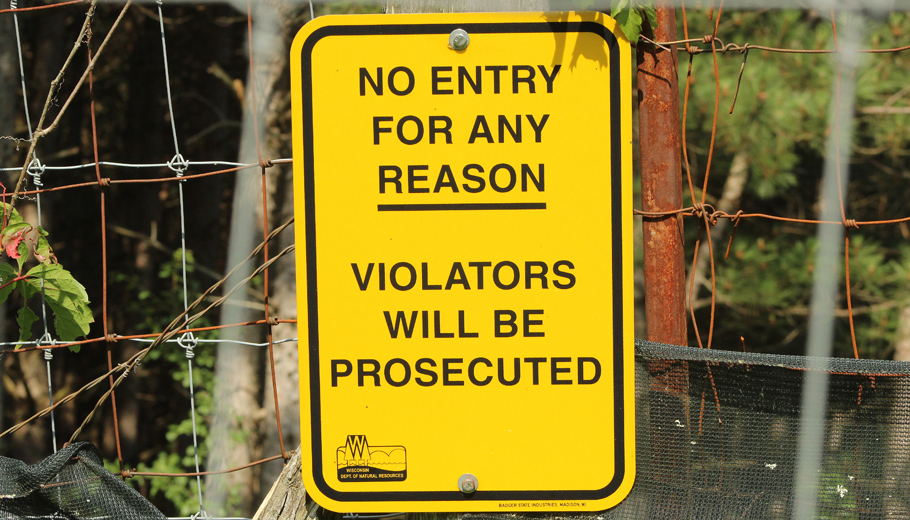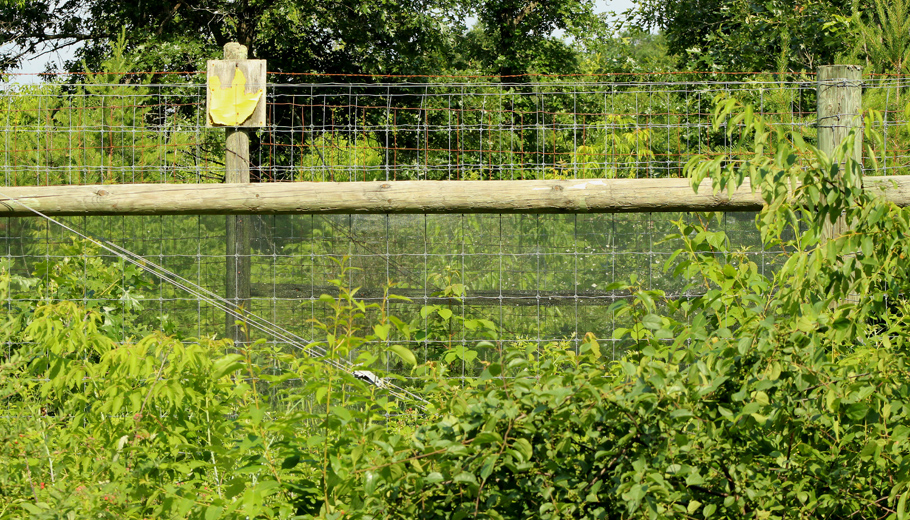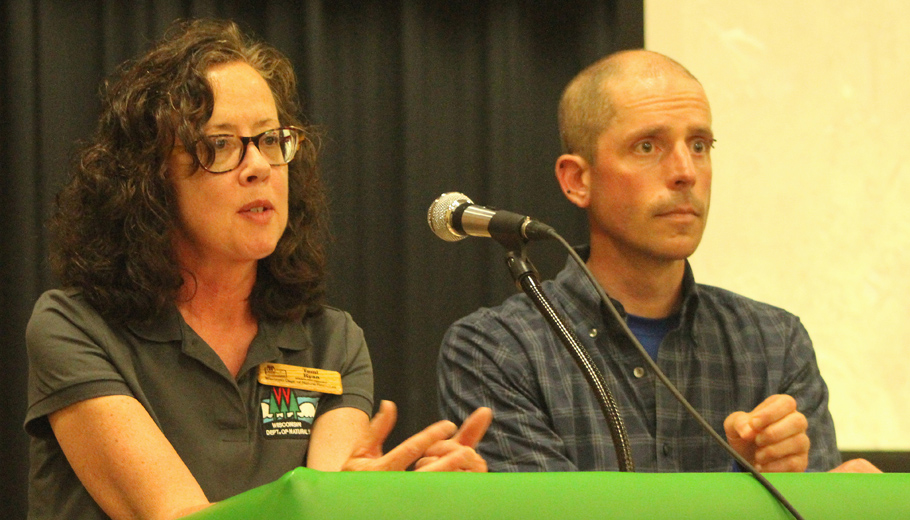Projects to focus on composting
By Greg Seubert
A former hunting preserve that gained notoriety nearly 20 years ago for having Wisconsin’s first captive white-tailed deer to test positive for chronic wasting disease is now being used for CWD research.
The state Department of Natural Resources bought the 80-acre Buckhorn Flats property, located near Almond in southern Portage County, in 2011 for $465,000.
About 30 people showed up July 9 at an open house at Almond-Bancroft High School to learn more about the research project.
The DNR and University of Wisconsin-Stevens Point are teaming up for the research. Lead researcher Rob Michitsch, an associate professor of soil and waste resources at UW-Stevens Point, will study how CWD behaves in the environment and if composting could be a viable way to dispose of CWD-infected carcasses in the future.
CWD is an always-fatal brain disease that affects white-tailed and mule deer, elk and moose. There is no known cure.
Michitsch, who is conducting the research with UW-Stevens Point natural resources student Susanna Baker, recently built four composting bins that will each house the carcasses of infected deer.
“Each one is 8 feet wide by 16 feet long and 4 feet high,” he said. “That should accommodate a composting pile that will have two carcasses in each one. We started by building the frames with plywood. There is 10 feet between each cell, so we’re trying to keep everything closely contained and have a nice working environment. We didn’t need to go any bigger than that, didn’t need to go any smaller.”
The bins will be capped on top and below with sawdust.
Groundbreaking research
Tami Ryan, the DNR’s wildlife health section chief, called the research groundbreaking.
“Even though CWD has been around a long time, the science of composting and its effect on CWD prions is in its infancy,” she said. “That’s why this is groundbreaking. We know of the research that occurred in Canada five years ago. Since that research, we’ve experienced in Wisconsin an ever-increasing challenge of deer carcass waste, either through hunters or our car-kill deer waste contractors or taxidermists and meat processors.
“By looking at another way of disposing of waste through composting, it could potentially give us a long-term solution or a new solution,” she said. “That’s what is so exciting about it: this may be a solution into the future that will carry us beyond the landfill or to a different waste product deposited into a landfill. There are some landfills out there that don’t accept deer carcass waste because of CWD. However, if you have a waste product in which the CWD prion is deactivated, that waste product could potentially then go into the landfill. Or, that compost product could be used for other purposes like construction fill or filling an old mine. There’s always a need for fill.”
The results of Michitsch and Baker’s research remain to be seen, but Ryan said they could have an effect on local governments.
“It’s a methodology that could be advantageous for local units of government,” she said. “There have been recent changes in state funding for disposal of deer carcasses, so a lot of that is now on counties. This is a potential way for them to operate their own composting based upon what we learn here with this science. That might be something that they could afford vs. other alternatives.”
The composting project is the first CWD-related research at the property since the state bought the land eight years ago.
University of Wisconsin-Madison soil scientist Joel Pedersen is overseeing a second research project, according to Ryan.
“There is a corresponding research project looking at CWD prion persistence in soil,” she said. “What we really want to try to learn here is since the property was depopulated and has been free of deer, are CWD prions still detectable in the soil? If they are, are they infectious?”
The CWD-positive deer at Buckhorn Flats led to the depopulation of the hunting preserve’s entire captive deer herd, which had a CWD prevalence rate approaching 80 percent.
CWD spreading north
The DNR began monitoring the state’s wild white-tailed deer for CWD in 1999. The first positives were found in 2002 through testing of hunter-harvested deer in November 2001.
“There’s certainly more that could be done,” Ryan said. “Last year, the department had some allocated funding for chronic wasting disease. Recognizing that there was a need for a solution and being aware of the science, we actually initiated this research and said, ‘Hey, Stevens Point, UW-Madison, are you interested in doing this research?’ We only had so much money. The money that we had to allocate is enough to fund getting these two projects underway.
“We’re going to learn something from both of these projects in the end,” she said. “Just like with any other research project, there are always more questions that can be explored. We would certainly continue to be partners and collaborate in advancing the science of CWD.”
Although most of Wisconsin’s CWD cases have been confined to an area west of Madison, the disease has also recently turned up in wild and captive deer in northern Wisconsin.
“It’s come up through the Wisconsin River Valley,” Ryan said. “We have additional positives in Eau Claire County and Lincoln and Oneida counties. We also have additional farms that have become infected as well. We’re seeing the same trend on both sides of the fence. It’s definitely a different environment now than it was back in 2002, or even 2011, when we bought the property.”



